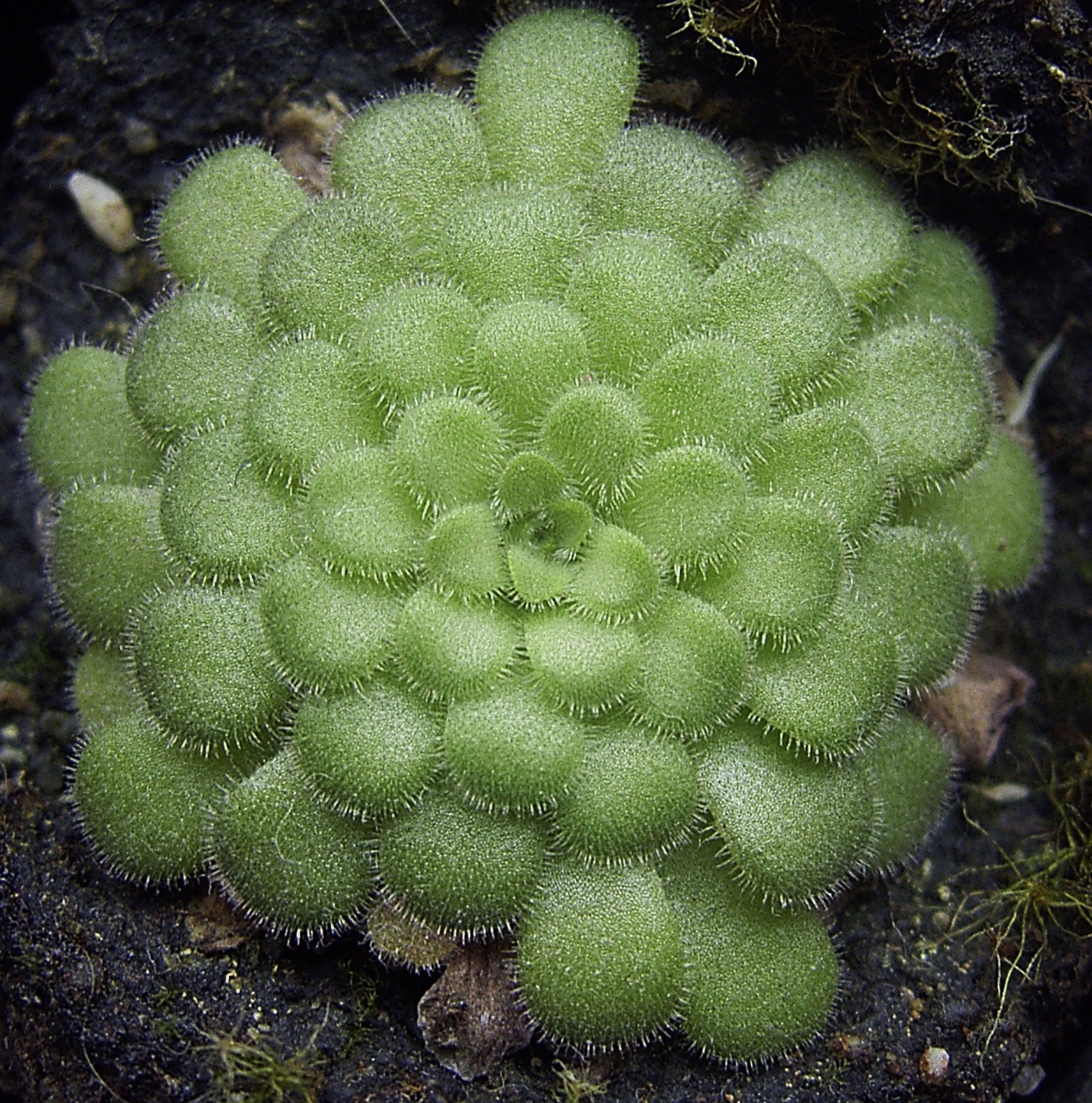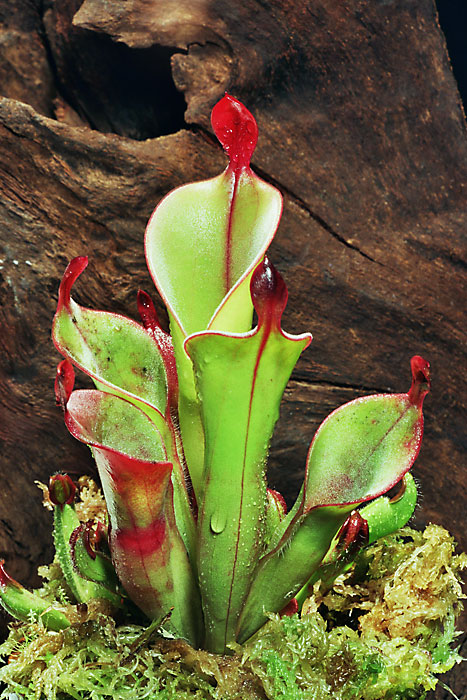|
Mucilage
Mucilage is a thick, gluey substance produced by nearly all plants and some microorganisms. These microorganisms include protists which use it for their locomotion. The direction of their movement is always opposite to that of the secretion of mucilage. It is a polar glycoprotein and an exopolysaccharide. Mucilage in plants plays a role in the storage of water and food, seed germination, and thickening membranes. Cacti (and other succulents) and flax seeds are especially rich sources of mucilage. Occurrence Exopolysaccharides are the most stabilising factor for microaggregates and are widely distributed in soils. Therefore, exopolysaccharide-producing "soil algae" play a vital role in the ecology of the world's soils. The substance covers the outside of, for example, unicellular or filamentous green algae and cyanobacteria. Amongst the green algae especially, the group Volvocales are known to produce exopolysaccharides at a certain point in their life cycle. It occurs in alm ... [...More Info...] [...Related Items...] OR: [Wikipedia] [Google] [Baidu] |
Succulent Plant
In botany, succulent plants, also known as succulents, are plants with parts that are thickened, fleshy, and engorged, usually to retain water in arid climates or soil conditions. The word ''succulent'' comes from the Latin word ''sucus'', meaning "juice" or "sap". Succulent plants may store water in various structures, such as leaf, leaves and Plant stem, stems. The water content of some succulent organs can get up to 90–95%, such as ''Glottiphyllum semicyllindricum'' and ''Mesembryanthemum barkleyii''. Some definitions also include roots, thus geophytes that survive unfavorable periods by dying back to underground storage organs may be regarded as succulents. The habitats of these water-preserving plants are often in areas with high temperatures and low rainfall, such as deserts, but succulents may be found even in Alpine climate, alpine ecosystems growing in rocky soil. Succulents are characterized by their ability to thrive on limited water sources, such as mist and dew, ... [...More Info...] [...Related Items...] OR: [Wikipedia] [Google] [Baidu] |
Drosera Anglica Ne4
''Drosera'', which is commonly known as the sundews, is one of the largest genera of carnivorous plants, with at least 194 species. 2 volumes. These members of the family Droseraceae lure, capture, and digest insects using stalked mucilaginous glands covering their leaf surfaces. The insects are used to supplement the poor mineral nutrition of the soil in which the plants grow. Various species, which vary greatly in size and form, are native to every continent except Antarctica.McPherson, S.R. 2008. ''Glistening Carnivores''. Redfern NaturalHistory Productions Ltd., Poole. Charles Darwin performed much of the early research into ''Drosera'', engaging in a long series of experiments with Drosera rotundifolia which were the first to confirm carnivory in plants. In an 1860 letter, Darwin wrote, “…at the present moment, I care more about ''Drosera'' than the origin of all the species in the world.” Both the botanical name (from the Greek δρόσος: ''drosos'' = "dew, dew ... [...More Info...] [...Related Items...] OR: [Wikipedia] [Google] [Baidu] |
Filamentation
Filamentation is the anomalous growth of certain bacteria, such as ''Escherichia coli'', in which cells continue to elongate but do not divide (no septa formation). The cells that result from elongation without division have multiple chromosomal copies. In the absence of antibiotics or other stressors, filamentation occurs at a low frequency in bacterial populations (4–8% short filaments and 0–5% long filaments in 1- to 8-hour cultures). The increased cell length can protect bacteria from protozoan predation and neutrophil phagocytosis by making ingestion of cells more difficult. Filamentation is also thought to protect bacteria from antibiotics, and is associated with other aspects of bacterial virulence such as biofilm formation. The number and length of filaments within a bacterial population increases when the bacteria are exposed to different physical, chemical and biological agents (e.g. UV light, DNA synthesis-inhibiting antibiotics, bacteriophages). This is termed ... [...More Info...] [...Related Items...] OR: [Wikipedia] [Google] [Baidu] |
Medicine
Medicine is the science and practice of caring for a patient, managing the diagnosis, prognosis, prevention, treatment, palliation of their injury or disease, and promoting their health. Medicine encompasses a variety of health care practices evolved to maintain and restore health by the prevention and treatment of illness. Contemporary medicine applies biomedical sciences, biomedical research, genetics, and medical technology to diagnose, treat, and prevent injury and disease, typically through pharmaceuticals or surgery, but also through therapies as diverse as psychotherapy, external splints and traction, medical devices, biologics, and ionizing radiation, amongst others. Medicine has been practiced since prehistoric times, and for most of this time it was an art (an area of skill and knowledge), frequently having connections to the religious and philosophical beliefs of local culture. For example, a medicine man would apply herbs and say prayers for healing, o ... [...More Info...] [...Related Items...] OR: [Wikipedia] [Google] [Baidu] |
Carnivorous Plant
Carnivorous plants are plants that derive some or most of their nutrients from trapping and consuming animals or protozoans Protozoa (singular: protozoan or protozoon; alternative plural: protozoans) are a group of single-celled eukaryotes, either free-living or parasitic, that feed on organic matter such as other microorganisms or organic tissues and debris. Histo ..., typically insects and other arthropods. Carnivorous plants still generate some of their energy from photosynthesis. Carnivorous plants have adapted to grow in places where the soil is thin or poor in soil nutrient, nutrients, especially nitrogen, such as acidic bogs. They can be found on all continents except Antarctica, as well as many Pacific islands. In 1875 Charles Darwin published ''Insectivorous Plants (book), Insectivorous Plants'', the first treatise to recognize the significance of carnivory in plants, describing years of painstaking research. True carnivory is believed to have convergent evoluti ... [...More Info...] [...Related Items...] OR: [Wikipedia] [Google] [Baidu] |
Pinguicula
''Pinguicula'', commonly known as the butterworts, is a genus of carnivorous flowering plants in the family Lentibulariaceae. They use sticky, glandular leaves to lure, trap, and digest insects in order to supplement the poor mineral nutrition they obtain from the environment. Of the roughly 80 currently known species, 13 are native to Europe, 9 to North America, and some to northern Asia. The largest number of species is in South and Central America. Etymology The name ''Pinguicula'' is derived from a term coined by Conrad Gesner, who in his 1561 work entitled ''Horti Germaniae'' commented on the glistening leaves: ''"propter pinguia et tenera folia…"'' (Latin ''pinguis'', "fat"). The common name "butterwort" reflects this characteristic. Characteristics The majority of ''Pinguicula'' are perennial plants. The only known annuals are ''P. sharpii'', ''P. takakii'', ''P. crenatiloba'', and ''P. pumila''. All species form stemless rosettes. Habitat Butterworts can be ... [...More Info...] [...Related Items...] OR: [Wikipedia] [Google] [Baidu] |
Drosera
''Drosera'', which is commonly known as the sundews, is one of the largest genus, genera of carnivorous plants, with at least 194 species. 2 volumes. These members of the family Droseraceae lure, capture, and digest insects using stalked mucilage, mucilaginous glands covering their leaf surfaces. The insects are used to supplement the poor mineral nutrition of the soil in which the plants grow. Various species, which vary greatly in size and form, are native to every continent except Antarctica.McPherson, S.R. 2008. ''Glistening Carnivores''. Redfern NaturalHistory Productions Ltd., Poole. Charles Darwin performed much of the early research into ''Drosera'', engaging in a long series of experiments with Drosera rotundifolia which were the first to confirm carnivory in plants. In an 1860 letter, Darwin wrote, “…at the present moment, I care more about ''Drosera'' than the origin of all the species in the world.” Both the botanical name (from the Ancient Greek, Greek δρ ... [...More Info...] [...Related Items...] OR: [Wikipedia] [Google] [Baidu] |
Genus
Genus ( plural genera ) is a taxonomic rank used in the biological classification of extant taxon, living and fossil organisms as well as Virus classification#ICTV classification, viruses. In the hierarchy of biological classification, genus comes above species and below family (taxonomy), family. In binomial nomenclature, the genus name forms the first part of the binomial species name for each species within the genus. :E.g. ''Panthera leo'' (lion) and ''Panthera onca'' (jaguar) are two species within the genus ''Panthera''. ''Panthera'' is a genus within the family Felidae. The composition of a genus is determined by taxonomy (biology), taxonomists. The standards for genus classification are not strictly codified, so different authorities often produce different classifications for genera. There are some general practices used, however, including the idea that a newly defined genus should fulfill these three criteria to be descriptively useful: # monophyly – all descendants ... [...More Info...] [...Related Items...] OR: [Wikipedia] [Google] [Baidu] |
Carnivorous Plant
Carnivorous plants are plants that derive some or most of their nutrients from trapping and consuming animals or protozoans Protozoa (singular: protozoan or protozoon; alternative plural: protozoans) are a group of single-celled eukaryotes, either free-living or parasitic, that feed on organic matter such as other microorganisms or organic tissues and debris. Histo ..., typically insects and other arthropods. Carnivorous plants still generate some of their energy from photosynthesis. Carnivorous plants have adapted to grow in places where the soil is thin or poor in soil nutrient, nutrients, especially nitrogen, such as acidic bogs. They can be found on all continents except Antarctica, as well as many Pacific islands. In 1875 Charles Darwin published ''Insectivorous Plants (book), Insectivorous Plants'', the first treatise to recognize the significance of carnivory in plants, describing years of painstaking research. True carnivory is believed to have convergent evoluti ... [...More Info...] [...Related Items...] OR: [Wikipedia] [Google] [Baidu] |
Alkaloid
Alkaloids are a class of basic, naturally occurring organic compounds that contain at least one nitrogen atom. This group also includes some related compounds with neutral and even weakly acidic properties. Some synthetic compounds of similar structure may also be termed alkaloids. In addition to carbon, hydrogen and nitrogen, alkaloids may also contain oxygen, sulfur and, more rarely, other elements such as chlorine, bromine, and phosphorus.Chemical Encyclopedia: alkaloids xumuk.ru Alkaloids are produced by a large variety of organisms including , , Medicinal plant, plants, an ... [...More Info...] [...Related Items...] OR: [Wikipedia] [Google] [Baidu] |
Tannin
Tannins (or tannoids) are a class of astringent, polyphenolic biomolecules that bind to and precipitate proteins and various other organic compounds including amino acids and alkaloids. The term ''tannin'' (from Anglo-Norman ''tanner'', from Medieval Latin ''tannāre'', from ''tannum'', oak bark) refers to the use of oak and other bark in tanning animal hides into leather. By extension, the term ''tannin'' is widely applied to any large polyphenolic compound containing sufficient hydroxyls and other suitable groups (such as carboxyls) to form strong complexes with various macromolecules. The tannin compounds are widely distributed in many species of plants, where they play a role in protection from predation (acting as pesticides) and might help in regulating plant growth. The astringency from the tannins is what causes the dry and puckery feeling in the mouth following the consumption of unripened fruit, red wine or tea. Likewise, the destruction or modification of t ... [...More Info...] [...Related Items...] OR: [Wikipedia] [Google] [Baidu] |








